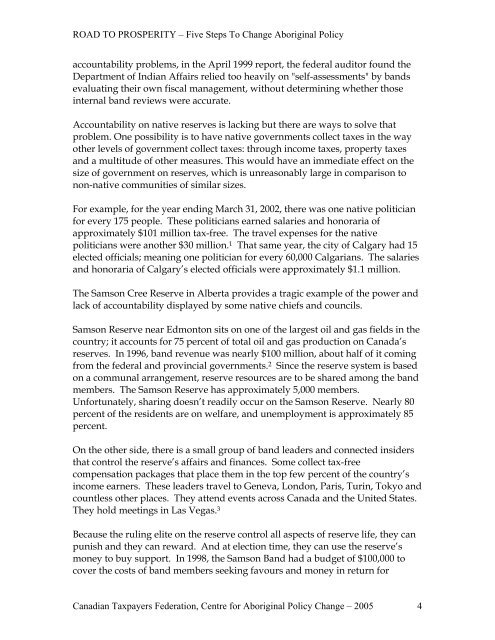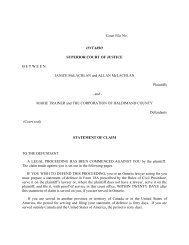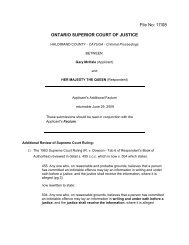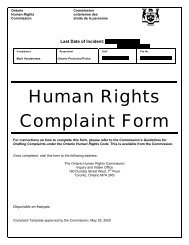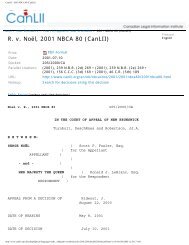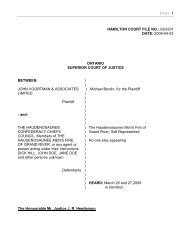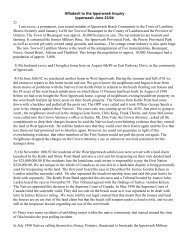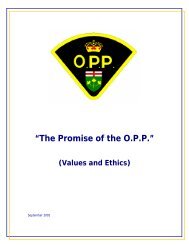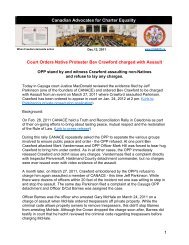Tanis Fiss, director Canadian Taxpayers Federation Centre for ...
Tanis Fiss, director Canadian Taxpayers Federation Centre for ...
Tanis Fiss, director Canadian Taxpayers Federation Centre for ...
You also want an ePaper? Increase the reach of your titles
YUMPU automatically turns print PDFs into web optimized ePapers that Google loves.
ROAD TO PROSPERITY – Five Steps To Change Aboriginal Policyaccountability problems, in the April 1999 report, the federal auditor found theDepartment of Indian Affairs relied too heavily on "self-assessments" by bandsevaluating their own fiscal management, without determining whether thoseinternal band reviews were accurate.Accountability on native reserves is lacking but there are ways to solve thatproblem. One possibility is to have native governments collect taxes in the wayother levels of government collect taxes: through income taxes, property taxesand a multitude of other measures. This would have an immediate effect on thesize of government on reserves, which is unreasonably large in comparison tonon-native communities of similar sizes.For example, <strong>for</strong> the year ending March 31, 2002, there was one native politician<strong>for</strong> every 175 people. These politicians earned salaries and honoraria ofapproximately $101 million tax-free. The travel expenses <strong>for</strong> the nativepoliticians were another $30 million. 1 That same year, the city of Calgary had 15elected officials; meaning one politician <strong>for</strong> every 60,000 Calgarians. The salariesand honoraria of Calgary’s elected officials were approximately $1.1 million.The Samson Cree Reserve in Alberta provides a tragic example of the power andlack of accountability displayed by some native chiefs and councils.Samson Reserve near Edmonton sits on one of the largest oil and gas fields in thecountry; it accounts <strong>for</strong> 75 percent of total oil and gas production on Canada’sreserves. In 1996, band revenue was nearly $100 million, about half of it comingfrom the federal and provincial governments. 2 Since the reserve system is basedon a communal arrangement, reserve resources are to be shared among the bandmembers. The Samson Reserve has approximately 5,000 members.Un<strong>for</strong>tunately, sharing doesn’t readily occur on the Samson Reserve. Nearly 80percent of the residents are on welfare, and unemployment is approximately 85percent.On the other side, there is a small group of band leaders and connected insidersthat control the reserve’s affairs and finances. Some collect tax-freecompensation packages that place them in the top few percent of the country’sincome earners. These leaders travel to Geneva, London, Paris, Turin, Tokyo andcountless other places. They attend events across Canada and the United States.They hold meetings in Las Vegas. 3Because the ruling elite on the reserve control all aspects of reserve life, they canpunish and they can reward. And at election time, they can use the reserve’smoney to buy support. In 1998, the Samson Band had a budget of $100,000 tocover the costs of band members seeking favours and money in return <strong>for</strong><strong>Canadian</strong> <strong>Taxpayers</strong> <strong>Federation</strong>, <strong>Centre</strong> <strong>for</strong> Aboriginal Policy Change – 2005 4


